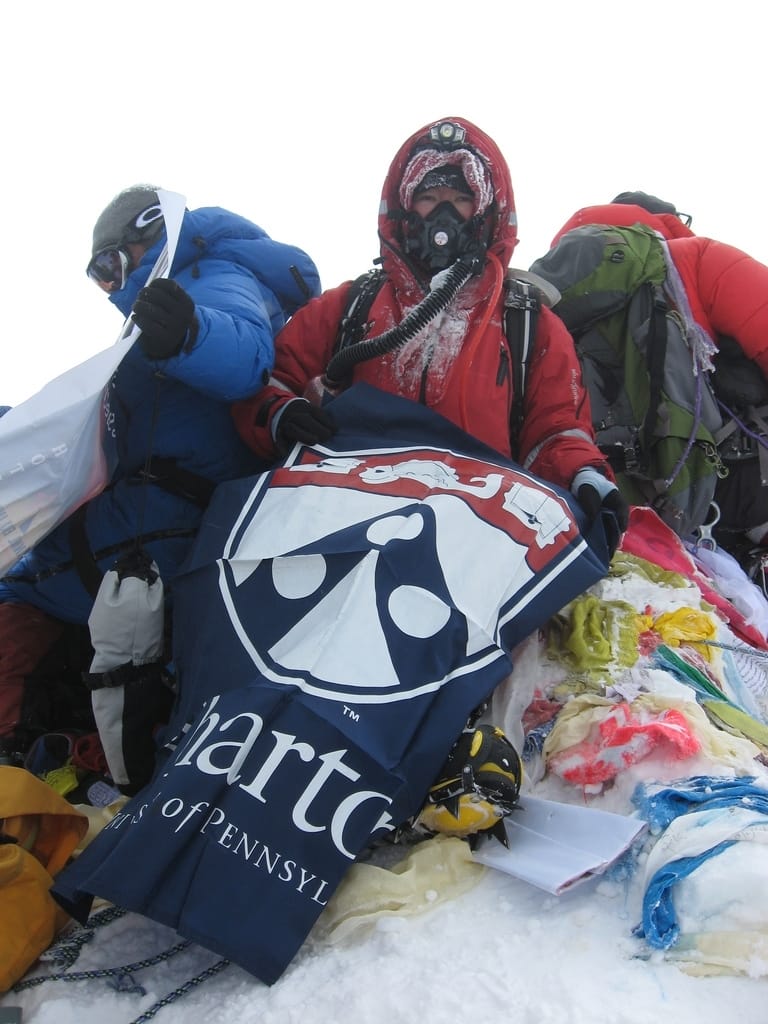Last week, for the first time in eight years, Lei Wang returned to Wharton. And what a story she had to tell.
Right around this time last year, we here at Wharton Magazine chatted with Wang as she prepared to clear the final hurdle of what would be a remarkable and historic feat. At the time, only mighty Mount Everest stood in the way of Wang completing the “7 + 2”—a truly mind-boggling challenge in which one attempts to climb the tallest mountains on each of the seven continents and ski to both the North and South Poles. During our conversation that day, even Wang admitted that summiting Everest—and completing the 7+2—was no sure thing.
In the end, however, the diminutive but determined Wang, WG’03, could not be denied. On May 24, she stood on top of the world (with a Wharton banner in hand, of course).
Yes, her mission is finally complete. But as Wang told an audience of Wharton students upon her return last week, she has no plans on giving up climbing—or seeking new challenges. Now that she’s become the first Chinese woman to accomplish the 7 + 2 (it took her seven years, and a whole lot of money), Wang has hit the road in hopes of encouraging other to set (and accomplish) seemingly impossible goals. During her Wharton appearance, Wang shared the lessons she learned during each of her nine adventures—adventures that posed unique challenges and pushed her to the limit in very different ways.
There was searing heat and blistering cold. The monotony of the South Pole and the daunting technical climbing challenges of Everest. There was sickness, danger and even occasional failure.
The experiences were “humbling,” she said. Often, she added, they were borderline miserable. But Wang said she never lost faith that she could accomplish what she set out to do way back in 2003.
“I always felt the same way,” she said. “I would tell myself, ‘I know this is impossible, but I’ve been here before, and I know I can overcome this—if I just take one step at a time.’”
She added: “I want to show everyone that even normal people can do this. If you learn to look beyond yourself, when you look back from the future—from the top [of the mountain] back down—you will able to see the path to the future.”


























